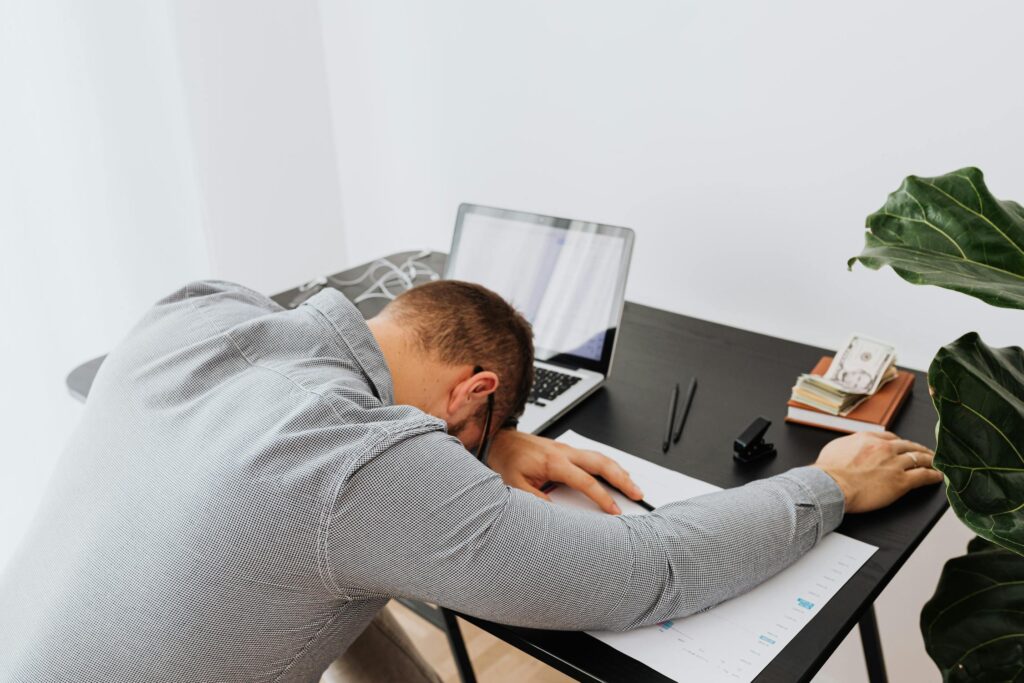News Team member Stephanie Oehler describes how the online "trad-wife" aesthetic fuels the flames of the anti-vaccination movement during the second-largest measles outbreak of the 21st century.
Why We Can’t Sleep at Night or Stay Awake During the Day
Work and school schedules are destroying our sleep. What can we do to stop that?
By Justine Borgia
*Beep* *Beep* *Beep* *Beep*. Millions of 7 am alarms blare in unison, calling for the beginning of the day. Some love a bright and early rise while others may be more inclined to hit snooze once or twice. They may find themselves dreaming of their lunch break before they even arrive at work, even after surrendering to the alarm clock and a couple of cups of coffee.
The National Safety Council recently reported that 76% of Americans report feeling tired at work. Now, researchers believe that work schedules may be in misalignment with many workers’ circadian rhythms, leading to inadequate, unhealthy sleep and causing excessive daytime sleepiness.
The circadian rhythm is the cycle that occurs over a 24-hour period, controlling both sleep and wakefulness. Many factors, from internal hormones to external light, regulate this internal clock, making it a system easily vulnerable to disruption. Interruption of the circadian rhythm can not only create frustrating sleep problems, but it is also linked to pathologies like obesity, diabetes, and cardiovascular disease.
One study is particularly worrying, especially for shift workers. Claire Smith, PhD, an associate professor in the department of psychology at University of South Florida, recently found that sedentary and non-traditional work schedules can negatively impact worker sleep and health.
Smith’s investigation, published in the Journal of Occupational Health Psychology, looked at data from 1,297 participants in the Midlife in the United States Study. They considered measures of sleep quality, including sleep duration, regularity, daytime tiredness, and insomnia symptoms for full-time workers at two points 10 years apart. Smith and her team found that those who worked sedentary jobs more often developed symptoms of insomnia. Additionally, those who worked non-traditional hours, such as overnight shifts, were linked to a catch-up sleeper phenotype, where they felt the need to supplement regular sleep with naps and sleeping in on non-work days.
These patterns are concerning. “Catch-up sleepers have more of a psychological well-being risk in the moment,” says Smith. “The insomnia group has 70 to 180% greater likelihood to develop heart disease, type two diabetes, depression symptoms, and frailty,” she adds.

Smith also notes that other aspects of work can interfere with sleep. “A big part of the problem is even if you work a traditional 9 to 5 job, you may still be connected to work, whether you’re checking your email or Slack messages, all of that is very disruptive to sleep,” she says.
With the demands of our world today, the quest for healthy sleep might seem helpless, but Smith offers solutions. For sedentary jobs, Smith suggests exercise; movement, even during short breaks, can help offset any symptoms of insomnia. Additionally, those with non-traditional work schedules may find artificial lights that mimic sunlight beneficial.
Smith also advocates for organizational changes, such as policies that set strict boundaries on when supervisors are allowed to message workers, or flexible time arrangements that allow people to adjust their work hours to their personal energetic peaks. Employers could benefit from these changes too. “When employees are getting better sleep, they’re more productive. they’re safer, there’s fewer workplace injuries, they’re more creative, and they’re more prosocial,” Smith says.
Irregular sleep, however, isn’t just a symptom of joining the workforce — it starts during childhood. A new study found that adolescents experienced social jetlag, or the desynchrony of one’s circadian rhythm with a socially imposed sleep schedule.
“It means that we are essentially traveling back and forth between a school or work time zone and our weekend time zone,” says lead author Dr. Brant Hasler, associate professor of psychiatry, psychology, and clinical and translational science at the University of Pittsburgh. Hasler and colleagues then found that adolescents experienced a significant amount of catch-up sleep on weekends due to the sleep deprivation during the school week.

Photo by Cottonbro Studio on Pexels.
The study, published in SLEEP, was the largest to collect dim light melatonin onset, or DLMO, on both weekdays and weekends. DLMO is a biological proof of the circadian clock, as it gives insight into when the body begins to produce melatonin in the evening, triggering sleep. Adolescents with a later DLMO, or a tendency to fall asleep and wake up later, experienced an even greater need for catch-up sleep on the weekends, because of the more extreme misalignment between their internal circadian clock and imposed sleep schedule. All groups, even those with an earlier DLMO, experienced this social jetlag, however, implying that early school times may lead to dysregulation in sleep in adolescents.
Adolescents are at an even greater risk for irregular sleep schedules than adults. In 2015, the Sleep Research Society and the American Academy of Sleep Medicine recommended 7 to 8 hours for adults, but 8 to 10 hours for adolescents. In addition, as adolescents go through puberty, their circadian clock shifts later and later, though it will eventually shift back at age 20. As such, the combination of increased sleep needs and a later internal circadian rhythm is not accommodated by early school start times.
“When we do longitudinal studies, there seem to be effects in adulthood based on what people are experiencing during adolescence,” Hasler says. “The way people process reward and the way that we’re able to control our impulses is influenced by sleep and circadian rhythm.”
This social jetlag teens are facing has lasting impacts. Hasler warns that, if there is a dysregulation of sleep, there is a greater risk for symptoms of depression, mood problems, substance use, and obesity, which can continue on into adulthood.
Smith agrees. “The work and school day, and society in general, is structured mostly favoring morning types, but there’s a big chunk of the population that is somewhere in between a morning type and an evening type, and there’s a big chunk that’s a late evening type,” she says.
Both Hasler and Smith’s research highlight one critical factor that should be considered when creating schedules: Everyone has a unique circadian rhythm. Shifting school hours later to align with an advancing adolescent circadian clock and allowing for people to set flexible schedules based on their wakefulness can help promote and protect the mental health of workers and students.
